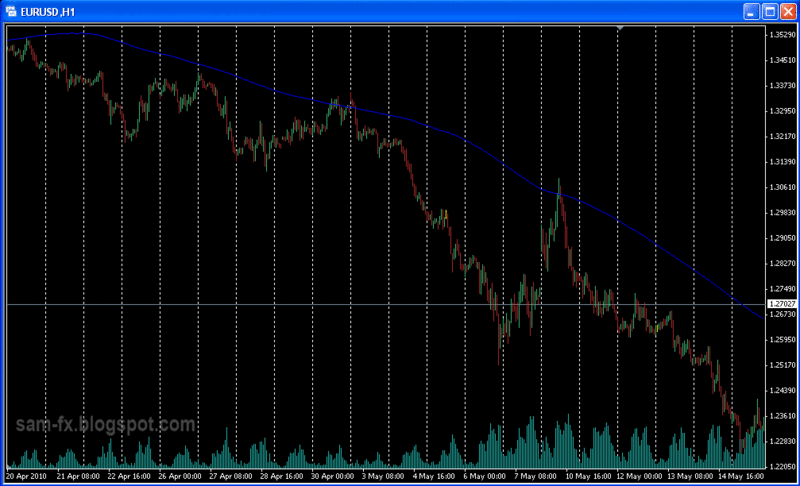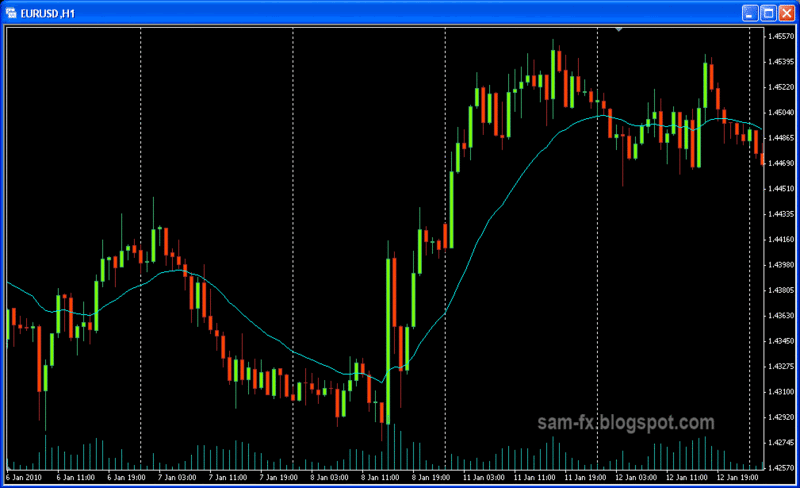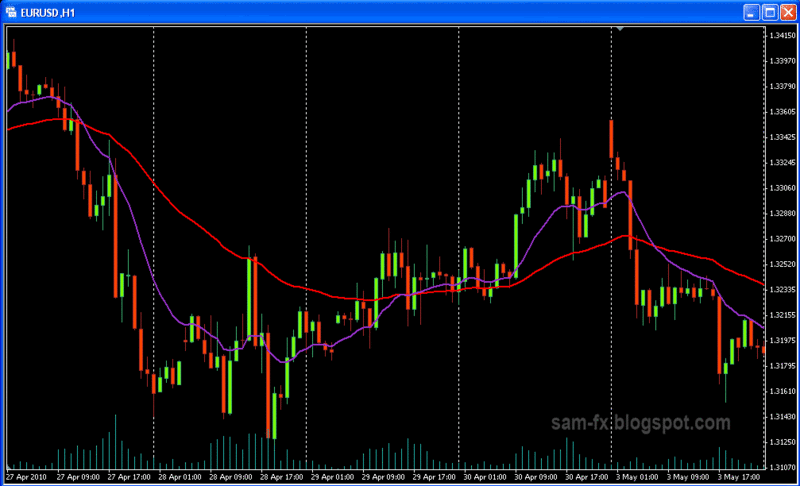Moving average, one of the simplest and most widely use indicator in
technical analysis. How well do you know your MA? Here I will share
with you what I have learn, and what I have observed about SMA and
EMA. Feel free to drop in your comments too.
As the name applies, Moving Average is average of the past price. With
the advance of charting software, the average can be apply to candle
close, open, high, or even low. But usually we will use moving average
that’s applied to candle close. The MA is calculated each time new
candle opens, thus its 'moving' along with the price. Moving average
means average of the past days, a 13 moving average means average of
past 13 candles. A 5-MA in a daily chart will be average of the past 5
days; while 5-MA in an hourly chart will represents the average of the
past 5 hours.
SMA (Simple moving average) is average of the previous price. Example
13 SMA will take the average of the past 13 candles; adding up the
closing price of past 13 candles and divide it by 13. The SMA are
usually more “smooth out” then EMA, and usually consider to be more
lagging.
The SMA200 (Blue Line). Notice how price tends to find resistance on it several times on the chart above.
EMA (Exponential Moving Average) puts more weight on recent price. EMA
is similar to SMA but is more sensitive to price movement. Thus at
first glance, EMA will looks more 'choppy' compare to the 'smooth out'
SMA. EMA put certain percentage on recent price, example 30% for
today's candle and 70% for the past few days candles. To obtain the
percentage, the charting tools use this formula : 2 / (period + 1);
example in 5 EMA, the percentage will be 2 / (5 + 1) = 33.3%, so 33%
weight will be given for current candles and 66% will be given to past
4 candles in the average calculation.
The EMA-21, light blue line. Notice price tends to move close to it.
There is no limit on what value to set on your EMA/SMA; and you may
set it to open, close, high, low of a candle. However here I list down
few of the more famous MA.
- 5, 13, 62 EMA (Rob Booker 5-13-62 system)
- 20 EMA
- 21 EMA ( fxKnight describe it as 'center of universe, as price often
- oscillate around it)
- 50 EMA
- 144 EMA
- 200 SMA
- 200 EMA ( one of the trading strategy at vitastop.com involving 200EMA )
- 250 EMA ( one of the forum user likes to use this with 50EMA cross )
- Multiple EMA, the GMMA trading strategy, created by Daryl Guppy
The EMA 5, in purple; and EMA13, in red. Notice price crossed each other several times.
There are many uses of Moving Averages, here I would share some tips
on usage of MA
- identify a long term trend (longer period SMA / EMA)
- identify a short term trend (shorter period EMA)
- acting as support / resistance area (especially for longer period,
- such as 200SMA)
- when shorter MA crosses above longer MA, its sign of uptrend, and
- vice-versea for downtrend
- when shorter MA crosses above longer MA and diverge from it, its sign
- of strong uptrend, and vice-versa for downtrend
- when shorter MA are above longer MA, and converge nearer, it means the
- up/down trend is slowing down
- when price is moving above EMA, its sign of strong uptrend. Vice versa
- for downtrend.
The EMA 5 (yellow), EMA 21 (orange), and EMA55 ( brown). Notice they tends to cross each other at several points.
There you go, few tips and tricks about MA. Lets start trading with our favorite MA combination now.




